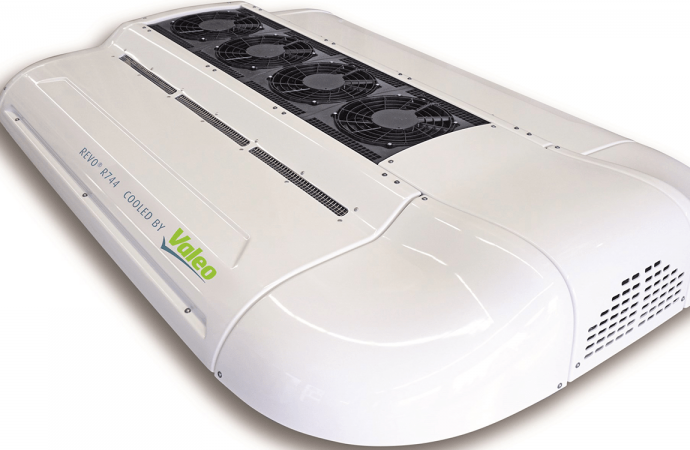
In what it called a “world-first” at Busworld in October, Valeo unveiled an all-electric, roof mounted, zero emission R744 (CO2) HVAC unit with heat pump function, designed for buses with alternative drives (electric buses).
The unit is already in production. “Although we are exhibiting our prototype, we already have 50 units on their way in our production line, ordered by one of our customers, planned for delivery by Q1 2020,” said Christian Schmidt, Director Application Engineering at Valeo at the Busworld show, which took place in Brussels, Belgium, October 18-23.
The environmentally neutral REVO-E HP R744 unit runs on 3,6kg (8lbs) of CO2 refrigerant at outside ambient temperatures ranging from -20°C to 44°C (-4°F to 111.2°F). The fully automatic, energy-efficient system selects the appropriate operating mode, switching from air conditioning to heat pump or de-icing. The de-icing function is automatically activated when outside temperatures drop below 5°C (41°F), preventing it from icing up, which can happen with traditional heat pumps.
Even if the ambient temperature is -10°C (14°F) outside, the heat provided by this unit’s heat pump is sufficient to heat a 12m (39ft) bus and doesn’t require additional heating sources such a diesel heater. This means that the CO2 unit can help buses increase their range and energy efficiency; normally in electric buses this size at that temperature, an electric heater would take up half the battery capacity of the bus for heating.
The move to CO2 was driven by a decrease of R134a availability as well as the fact that CO2 is environmentally friendly, explained Frank Färber, Director Sales for Valeo.
The REVO-E HP R744 unit is a plug-and-play device that has an integrated CO2 compressor for a total weight of 340kg/749.6lbs (100kg/220.5lbs of which is the built-in compressor). Light-weight components were used because the total weight for an electric bus should be as low as possible. “The goal is to move passengers, not the vehicle,” said Färber.